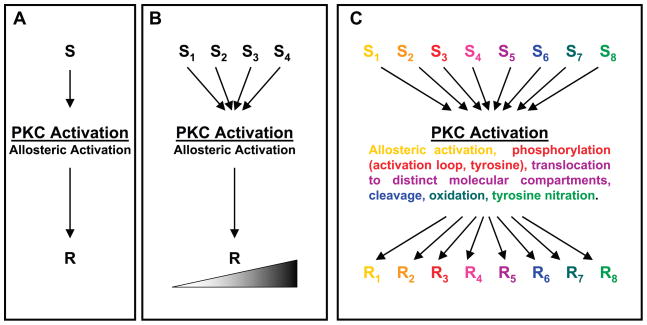FIG. 9.
Evolving concepts of signaling pathway activation. A: the original concepts of linear signal transduction pathways held that stimuli evoke responses via the actions of transducers (such as G proteins or PKC isoforms). B: models of signal transduction were first revised to allow for the presence of multiple stimuli that can converge on a single signaling pathway and alter the amplitude of a signaling response. This could reflect the activation of different pools of a single enzyme. Alternatively, amplitude control might be due to the differential stimulatory properties of full or partial agonists. C: more current models of signaling transduction allow for a high level of signal integration by proteins (such as PKCδ) that are regulated through conformational changes, translocation events, and various posttranslational modifications (phosphorylation, oxidation, tyrosine nitration, etc.) that can underlie stimulus-specific signaling responses.

